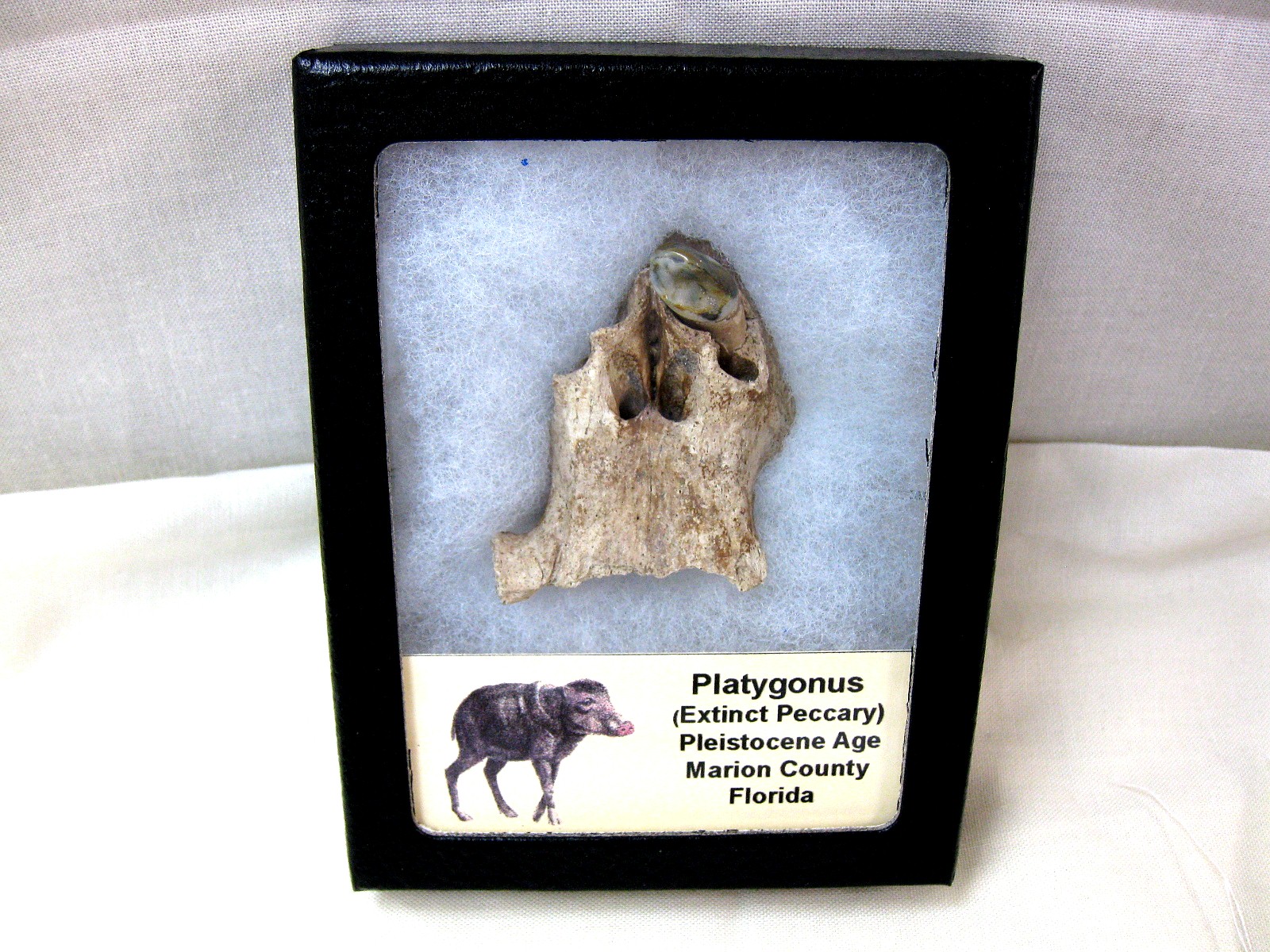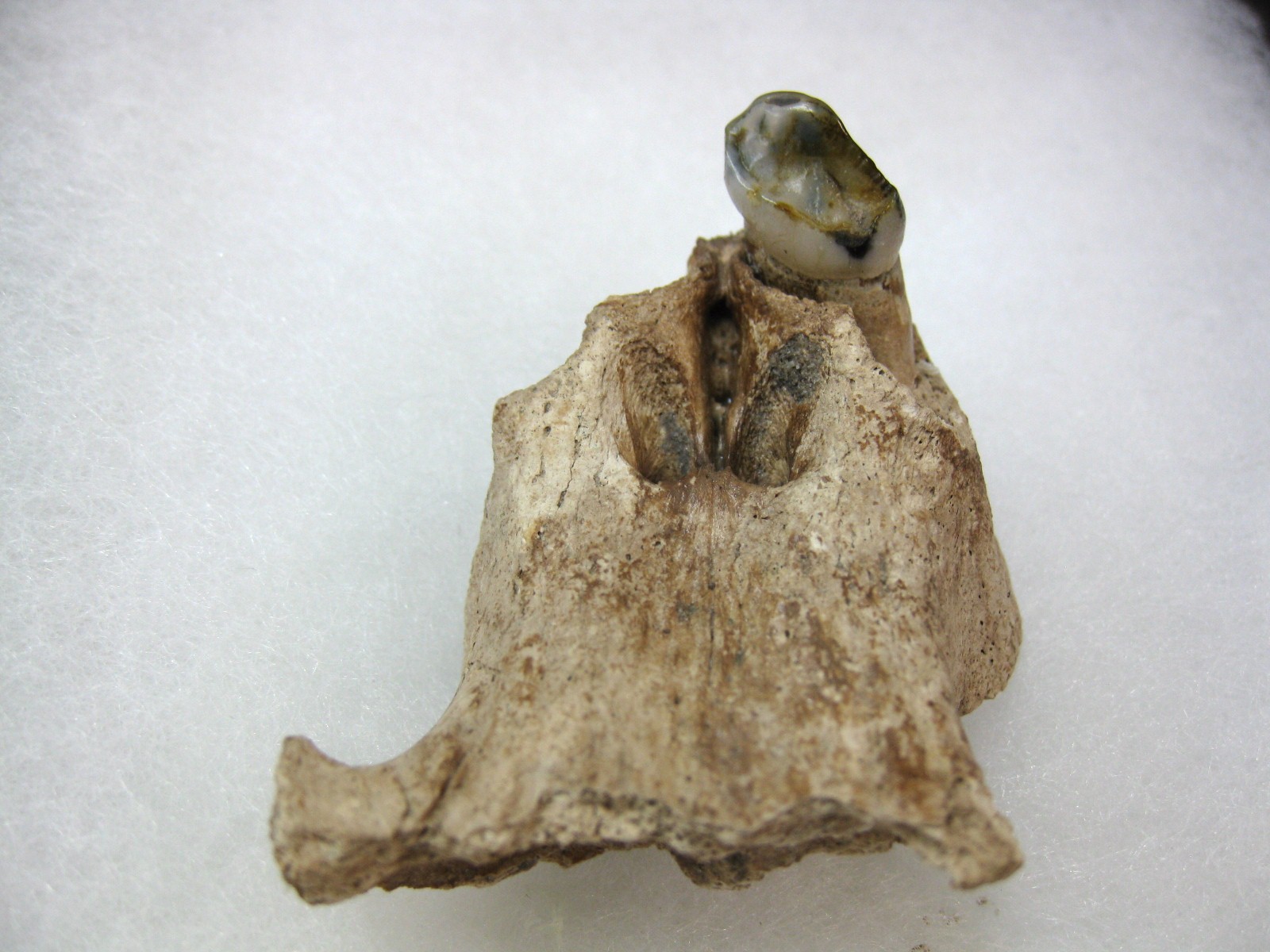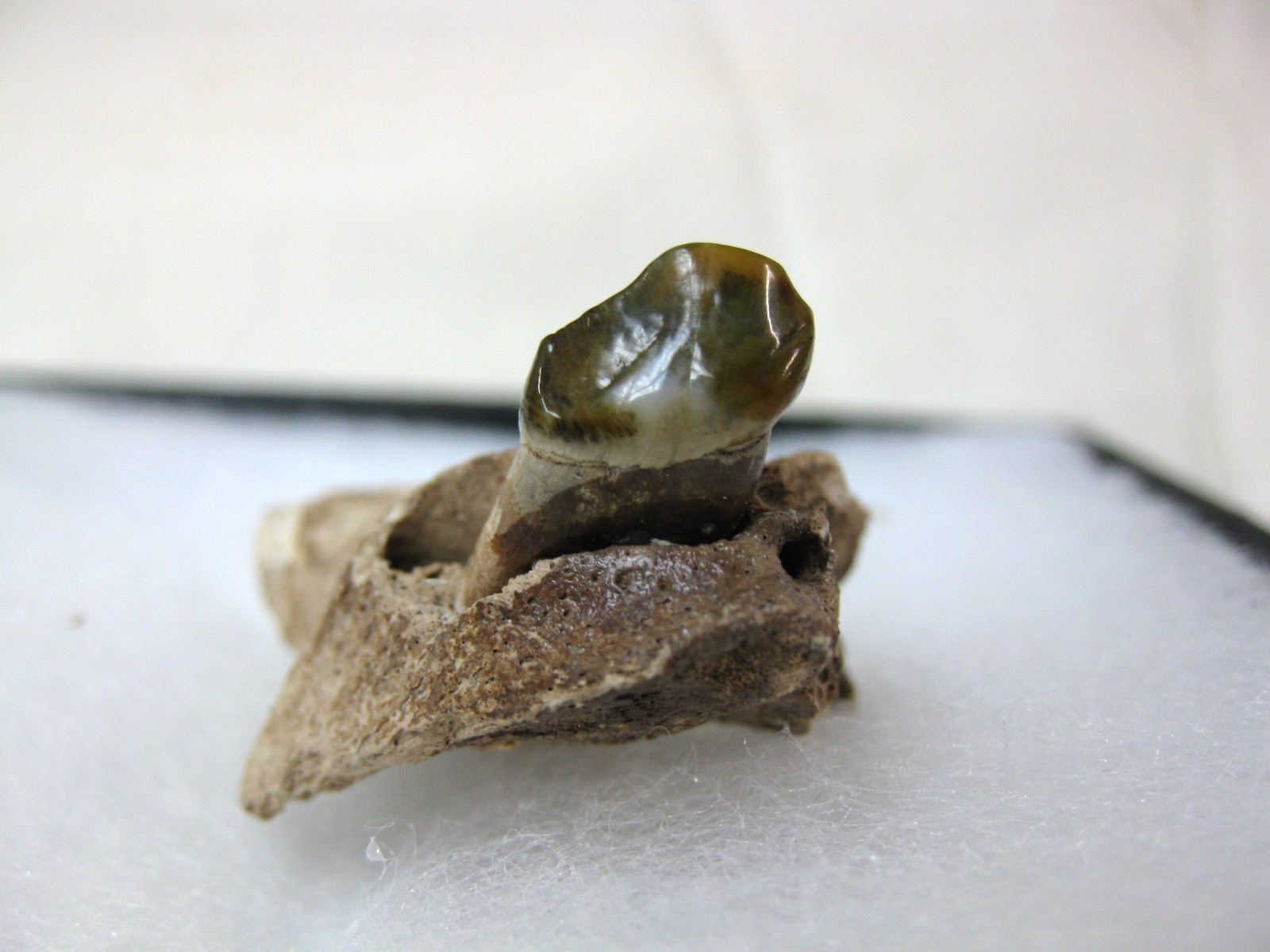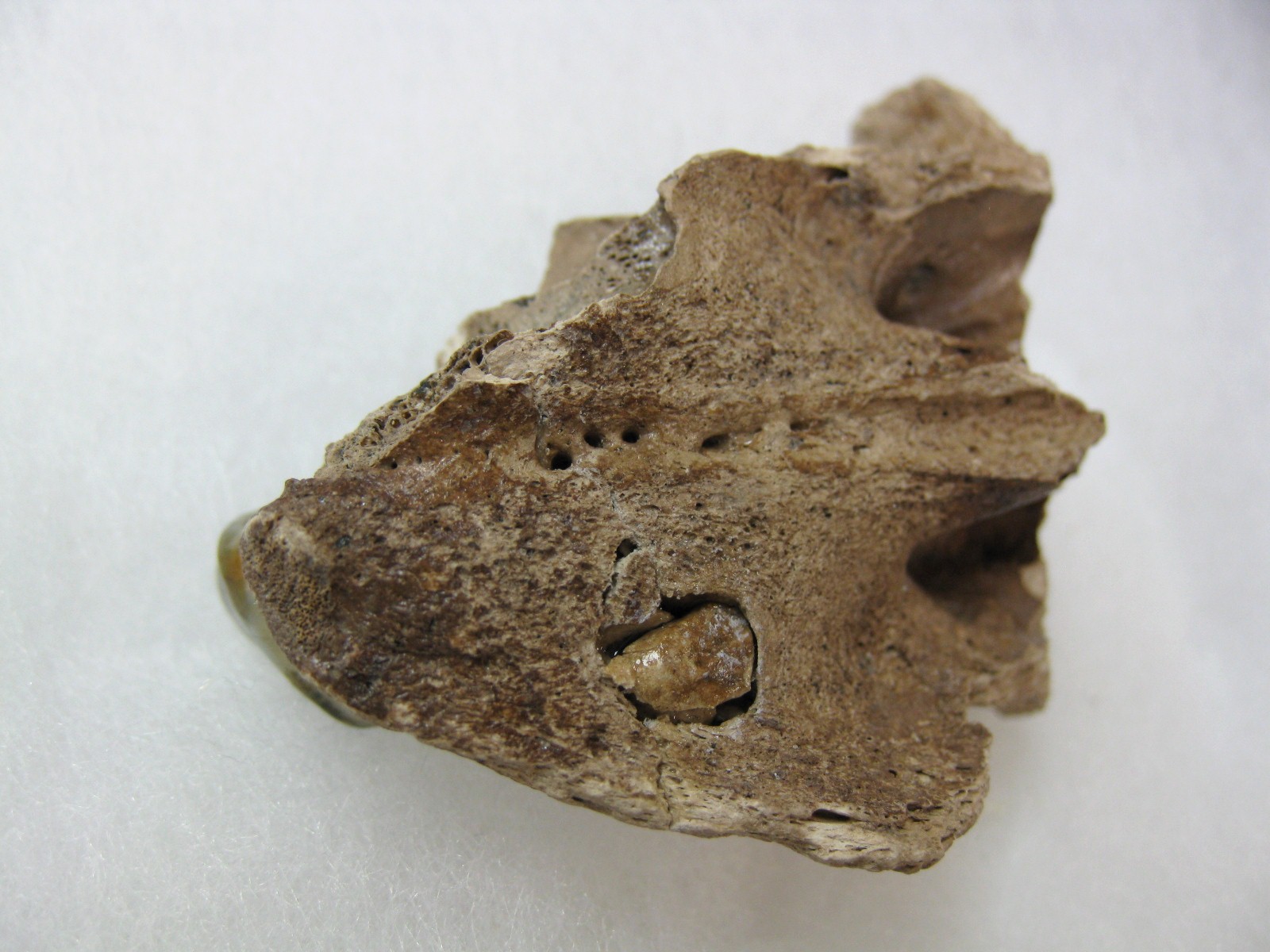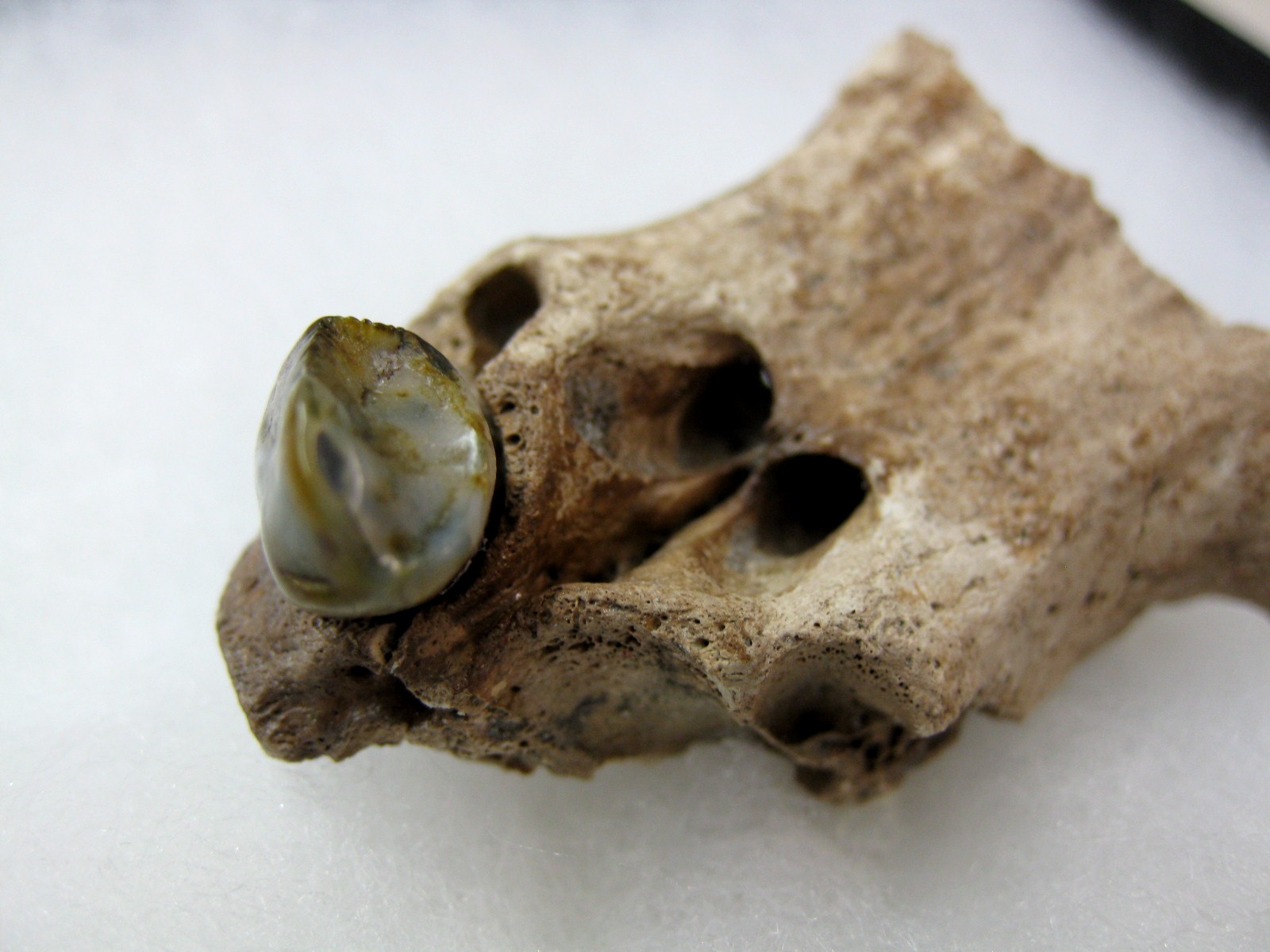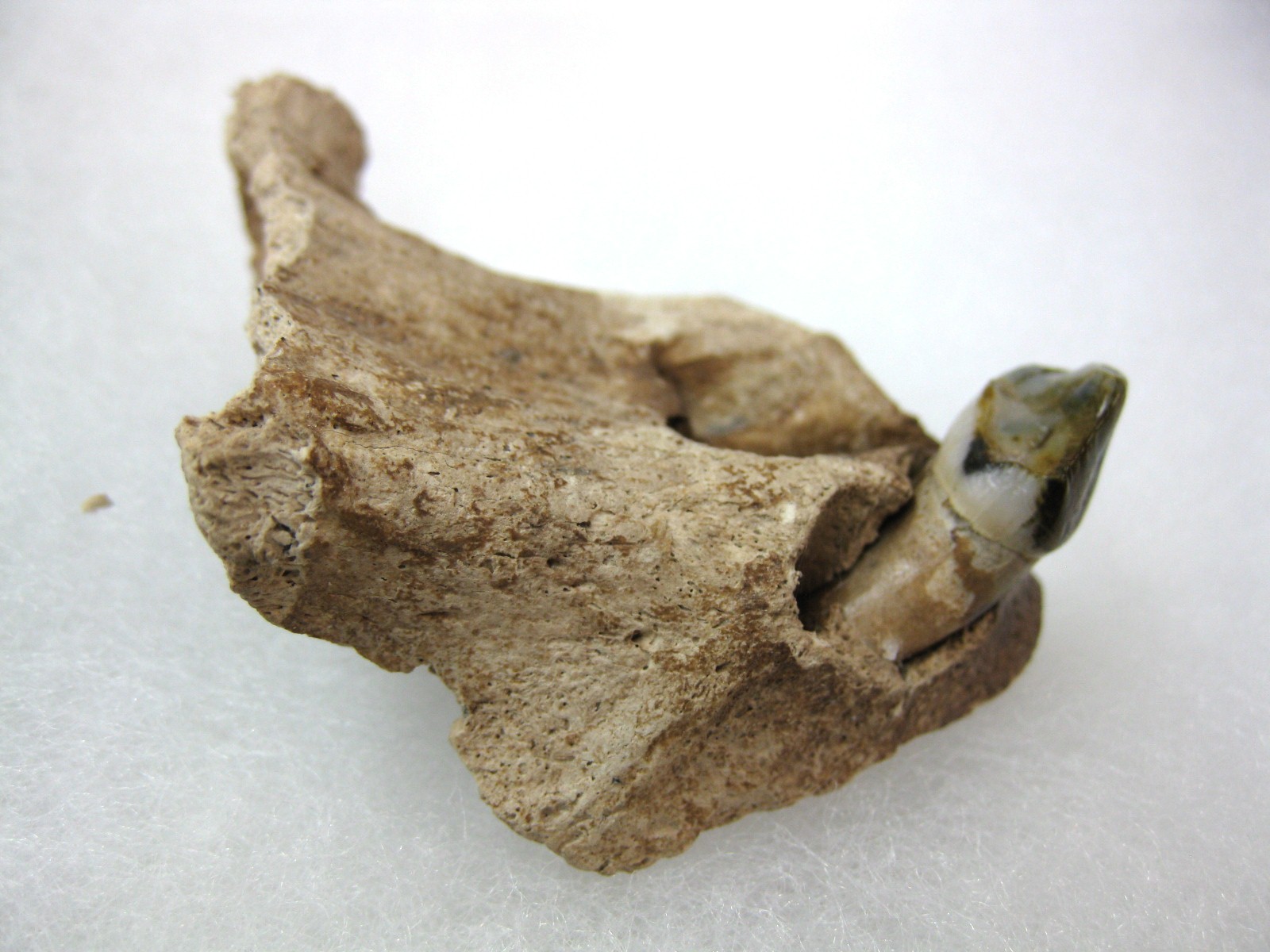Description
- Platygonus compressus (Extinct Peccary)
- Pleistocene Age
- River Deposits
- Marion County, Florida
- Specimen measures approx. 1 13/16″ long and comes in the 3.25″ x 4.25″ Riker Mount with Label as Shown.
Platygonus (“flat head” in reference to the straight shape of the forehead) is an extinct genus of herbivorous peccaries of the family Tayassuidae, endemic to North America from the Miocene through Pleistocene epochs (10.3 million to 11,000 years ago), existing for about 10.289 million years. Platygonus were gregarious animals and, like modern peccaries, possibly traveled in herds. At least nine known species of Platygonus are known and ranged from southern Canada to Mexico and from California to Pennsylvania. Stratigraphically, they occur throughout the Pleistocene (Calabrian), and as early as the Blancan in the Gelasian of the Pliocene. The most recent credible date obtained for some species remains is about 11,000 BP. Most Platygonus species were larger than modern peccaries, at around 1 m (3.3 ft) in body length, and had long legs, allowing them to run well. They also had a pig-like snout and longtusks which were probably used to fend off predators. They had a complex digestive system, similar to that of a modern ruminant. Flat-headed Peccaries were highly adapted to forage in relatively open environments. Compared to other contemporary peccaries, including those still alive today, it had a much more robust skull and mandible with a keeled chin. Its large eyes were also set higher and farther back on the skull suggesting keen eyesight and a wide field of vision. The olfactory region of the brain is greatly enlarged and the nasal passages were wide and heavily turbinated, hinting at an extraordinary sense of smell. High thoracic spines supported powerful neck muscles and tendons that would allow powerful jerking motions of the head when feeding. The tail was also much longer than that of any living peccary and potentially could have served a function in visual communication. The limbs were long and slender for fast-running and the lateral toes had been completely reduced to tiny, vestigial* splints of bone.

